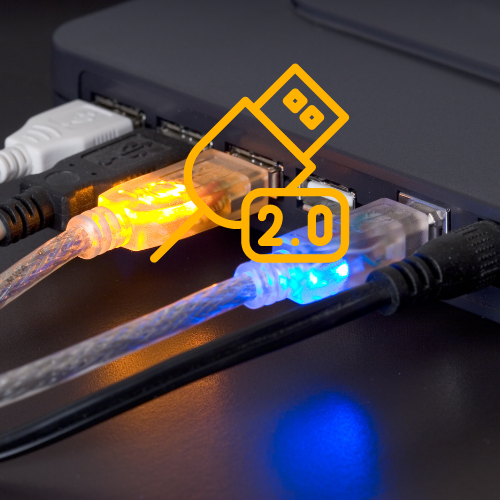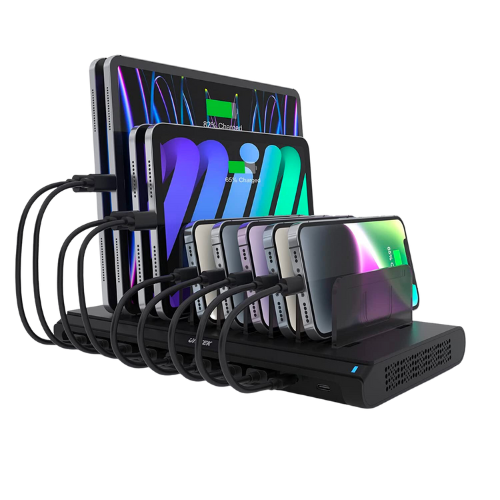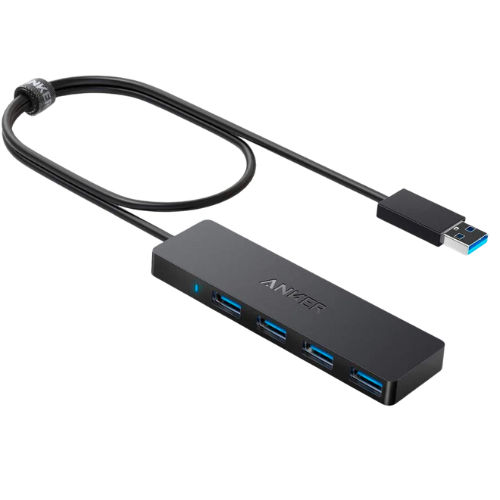Expanding Connectivity Options
USB 2.0 hubs are devices designed to transform a single USB port into several, opening a world of connectivity options for various devices. Today, we delve into the extensive features and benefits that these versatile hubs offer, placing particular focus on their utility in industrial settings.
Key Takeaways
- Compliance and Flexibility: USB 2.0 hubs are compliant with USB 2.0 specifications, guaranteeing reliable performance. Their high level of flexibility makes them suitable for diverse usage scenarios.
- Speed and Charging Options: These hubs are high-speed USB 2.0 devices that ensure swift data transfers. With multiple charging modes, a variety of devices can be powered conveniently.
- Industrial-grade Durability: Industrial grade USB 2.0 hubs stand out due to their durability, high retention ports, and ability to withstand harsh environments. They are highly configurable and ideal for cost-effective device integration in such settings.
- Broad Device Compatibility: USB 2.0 hubs can connect a wide range of devices, including smartphones, laptops, printers, scanners, and more, to a single USB port.
- Maximum Device Connections: The USB specifications allow for up to 127 devices, including the hub devices, to be connected to a single USB host controller. Overloading the hub can lead to functional issues, and hence it’s advisable to stick to this limit.
- Solution to Overloading: If more than 127 devices need to be connected, additional USB host controllers or ports should be added to the computer system.
- Value for Money: With their extensive benefits, USB 2.0 hubs provide a cost-effective solution for expanding your device connectivity options.
Defining Features of USB 2.0 Hubs
USB 2.0 hubs proudly bear a mark of compliance with USB 2.0 specifications, a testament to their consistent quality. Their construction allows them to be highly flexible and configurable, ensuring adaptability in different usage scenarios. Being a high-speed USB 2.0 device, these hubs guarantee swift data transfer. Finally, with multiple charging modes, users can conveniently power a diverse range of devices.
Benefits: Why USB 2.0 Hubs Stand Out
USB 2.0 hubs certainly deliver on multiple fronts, being cost-effective, user-friendly, and capable of expanding the functionality of your USB port with ample connectivity options. They also impress with their fast data transfer speeds, making them a popular choice for those in need of efficient operations. To further explore this, you may want to read our Review of the Top USB 2.0 Hubs which delves into the specifics of the best models on the market.
USB 2.0 Hubs in Industrial Settings
Enhanced Durability and High Retention Ports
Industrial settings often demand a higher standard of durability and functionality in equipment. USB 2.0 hubs, particularly the industrial-grade variety, are built to meet these rigorous demands. Engineered to withstand high-vibration environments, they offer enhanced durability compared to regular hubs.
These hubs stand out for their high configurability, which paves the way for a seamless and cost-effective device integration. A standout feature of industrial-grade USB 2.0 hubs is their high-retention ports, designed to maintain a secure connection in high-vibration environments. For more information on this, we recommend checking out our Review of the Top Industrial USB 2.0 Hubs that goes into detail about the best industrial-grade hubs available in the market.
Extensive Connectivity with USB 2.0 Hubs
Connecting Multiple Devices
A USB 2.0 hub is a versatile tool that allows for the connection of various devices to a single USB port. It can connect everything from smartphones, tablets, laptops, and desktop computers to printers, scanners, and external hard drives. Flash drives, keyboards, mice, and game controllers are also easily connected, highlighting the hubs’ expansive connectivity potential.
Industrial-grade USB 2.0 Hubs for High-Speed Peripherals
Industrial settings often require the connection of high-speed peripheral devices to a computer in harsh environments. In these instances, industrial-grade USB 2.0 hubs come in handy. As mentioned earlier, these hubs are designed to endure tough environments and are highly configurable. They also feature multiple ports, providing vast connectivity options for devices.
Maximum Device Connections on USB 2.0 Hubs
The maximum number of devices that can connect to a USB 2.0 hub depends on several factors. These include the number of hubs attached, the USB host controller, and the USB specification.
Connectivity as per USB Specifications
USB specifications allow up to 127 devices, hub devices included, to connect to a single USB host controller. However, if you have 50 hubs attached, this number drops to 77 (127 − 50). USB specifications also set a limit to the maximum number of tiers, putting a hard cap on five daisy-chained hubs (excluding the root hub).
A single USB hub can connect a maximum of 127 devices, covering both downstream and upstream devices. However, the maximum number of USB devices usable depends on the USB hubs and the USB host controller.
Potential Issues with Overloading USB 2.0 Hubs
Connecting more than 127 devices to a single USB 2.0 hub could lead to problems. For instance, the USB hub may fail to function properly. The USB controller might lack sufficient resources for the devices, leading to errors. Additionally, the USB connection topology might limit the maximum number of hubs a message can cross between the host controller and the device. Starting from the USB controller and the Root Hub embedded on the host motherboard, a message can only cross five external hubs at most.
Therefore, it is advisable to connect up to 127 devices to a single USB host controller, including the hub devices. If more devices need to be connected, you may need to add additional USB host controllers or ports to your computer.
In conclusion, USB 2.0 hubs offer an expansive range of benefits that make them an essential tool in both personal and industrial settings. Their high-speed data transfer, multiple charging modes, durability, and high retention ports make them an excellent choice for expanding your connectivity options. Whether you’re connecting a smartphone, printer, or an industrial-grade scanner, USB 2.0 hubs provide an efficient and cost-effective solution.
Frequently Asked Questions (FAQs)
USB 2.0 hubs are devices that expand a single USB port into several. They provide ample connectivity options for various devices and are fully compliant with USB 2.0 specifications.
You can connect a wide range of devices to a USB 2.0 hub. This includes smartphones, tablets, laptops, desktop computers, printers, scanners, external hard drives, flash drives, keyboards, mice, and game controllers.
USB 2.0 hubs offer several benefits, including fast data transfer speeds, cost-effectiveness, and ease of use. They provide ample connectivity options for devices and are highly flexible and configurable.
Industrial grade USB 2.0 hubs are designed to withstand harsh environments. They are highly durable, configurable, and feature high retention ports, making them ideal for easy and cost-effective device integration in industrial settings.
According to the USB specifications, you can connect up to 127 devices, including the hub devices, to a single USB host controller.
Connecting more than 127 devices to a USB 2.0 hub can lead to functional issues. The USB controller may not have sufficient resources for the devices, and you might encounter errors. It is recommended to add additional USB host controllers or ports if more devices need to be connected.
Yes, USB 2.0 hubs are high-speed devices that ensure swift data transfers, making them a preferred choice for users who need to manage a large volume of data across multiple devices.






